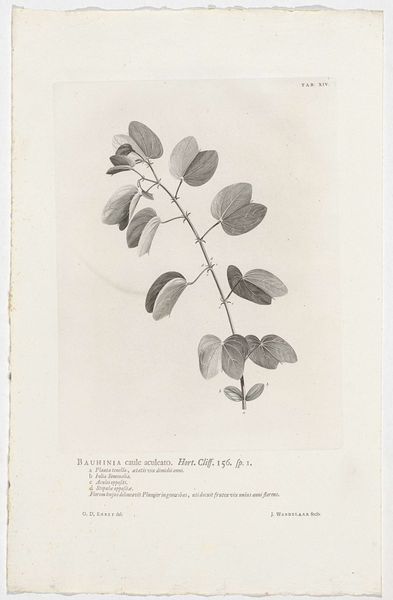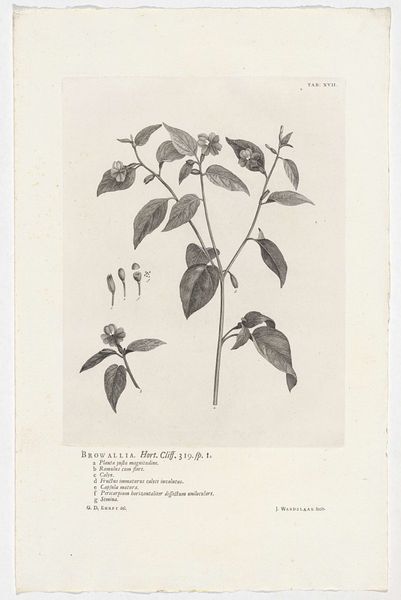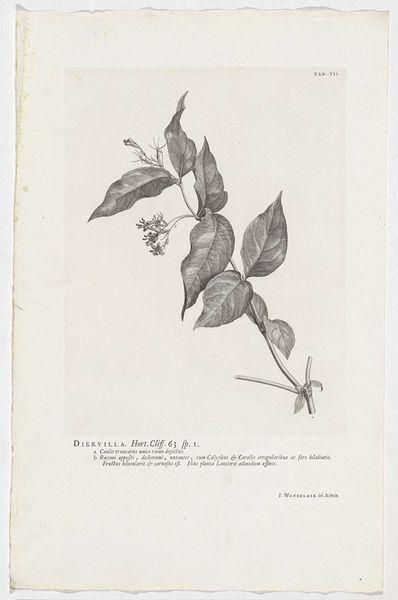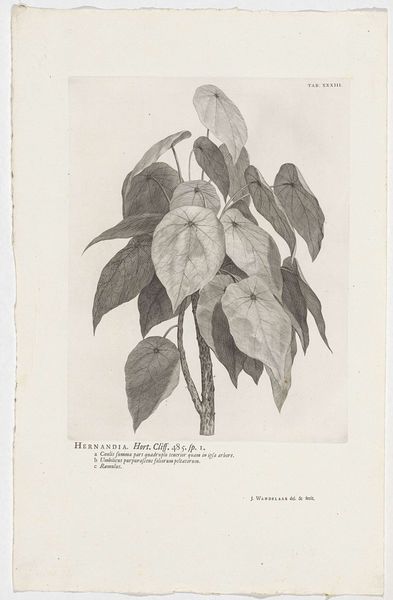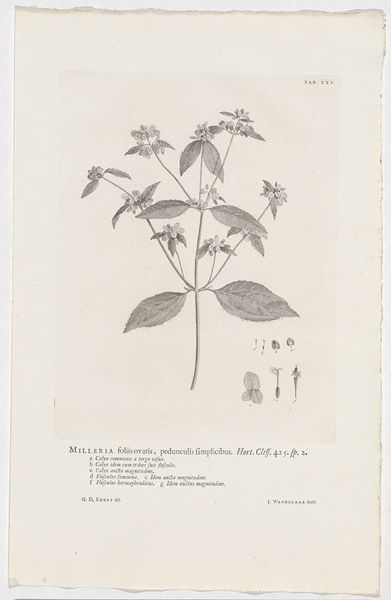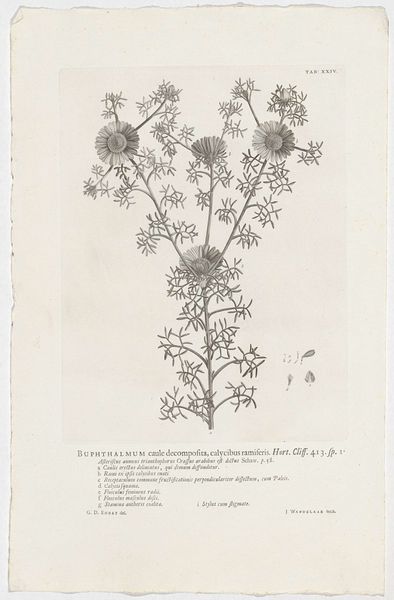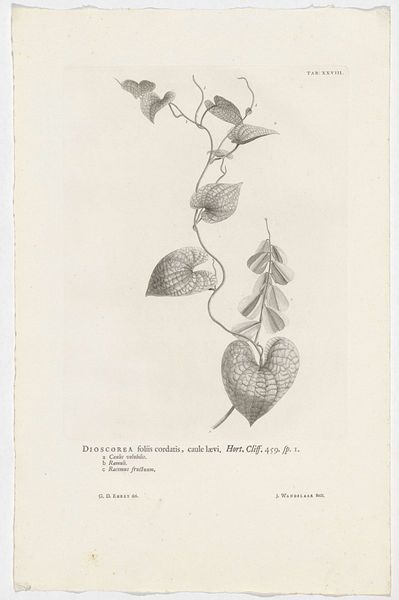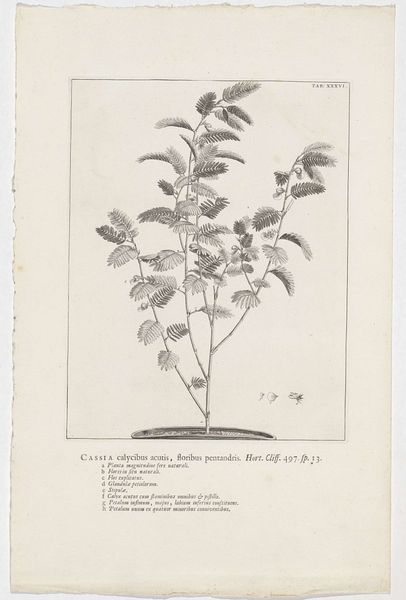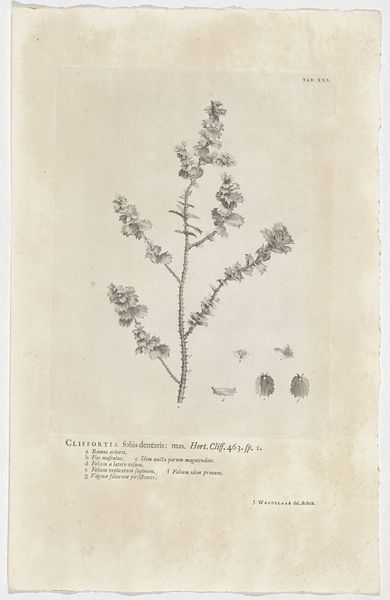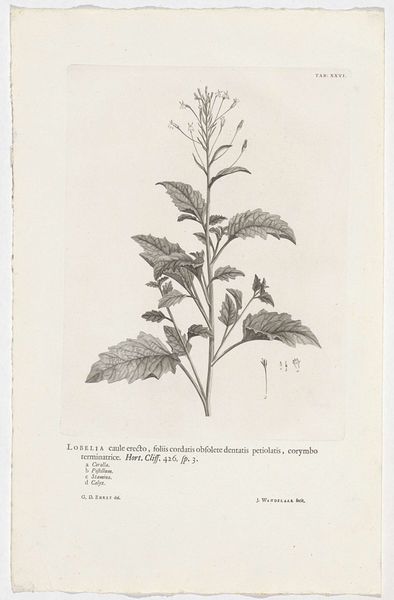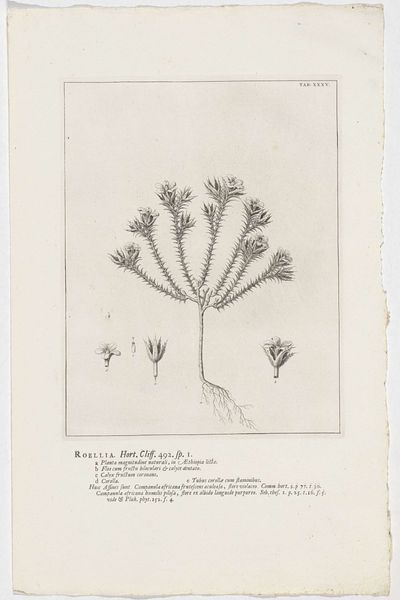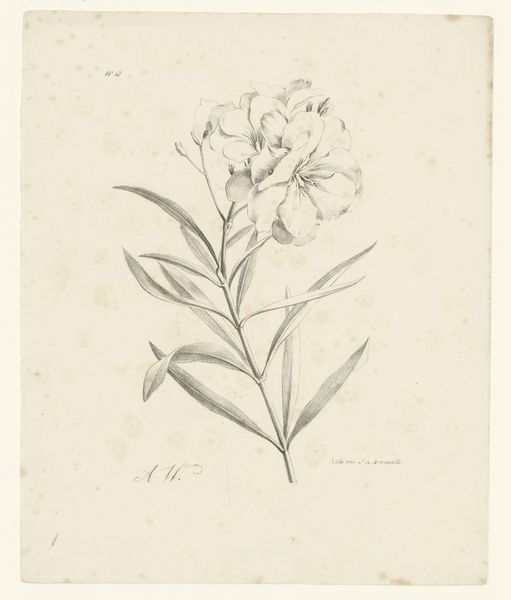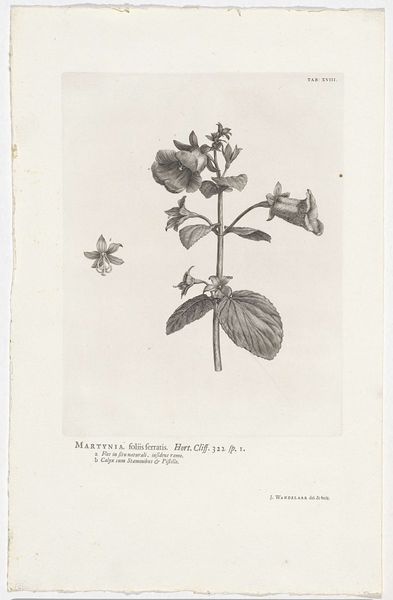
drawing, print, paper, pencil
#
drawing
# print
#
landscape
#
flower
#
paper
#
plant
#
pencil
#
botanical drawing
#
academic-art
Dimensions: height 292 mm, width 222 mm
Copyright: Rijks Museum: Open Domain
Editor: This is Jan Wandelaar's "Bauhinia divaricata," a drawing and print from 1738. It feels incredibly precise and delicate, like a scientific illustration. I’m curious about how it fits into the artistic conventions of its time. How do you interpret this work within its historical context? Curator: It's more than *just* a scientific illustration. We need to consider the function and role of botanical art within the scientific and social circles of the 18th century. Works like Wandelaar’s contributed to the burgeoning field of botany but were also objects of beauty and status, weren't they? Editor: Definitely, I can see that. Was there an expectation that art served both scientific and aesthetic purposes back then? Curator: Precisely. Botanical drawings were often commissioned by wealthy patrons and institutions to document new plant discoveries, reflecting colonial expansion and the control of knowledge, but also displayed in cabinets of curiosity and lavishly bound books as signifiers of refinement and wealth. This is linked with trade and power structures, isn't it? Editor: So, the image functions as a tool for science and a symbol of power and status. Did the style also play a role? It's very academic in style. Curator: Exactly! The academic style lends an air of authority and objectivity, legitimizing the depicted knowledge. What does it mean to portray a natural subject using conventions rooted in academic tradition? Editor: I guess it makes the depiction authoritative, fitting within existing frameworks of knowledge production and acceptance. Curator: Absolutely. We need to always consider who is commissioning the artwork and what societal and political forces are at play, even in a drawing of a flower! Editor: I hadn't thought of a botanical drawing as reflecting political power, but I understand your points. This reminds me that art never exists in a vacuum.
Comments
No comments
Be the first to comment and join the conversation on the ultimate creative platform.
